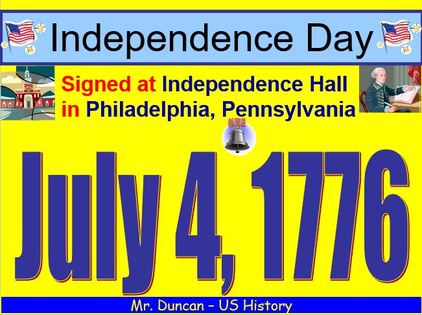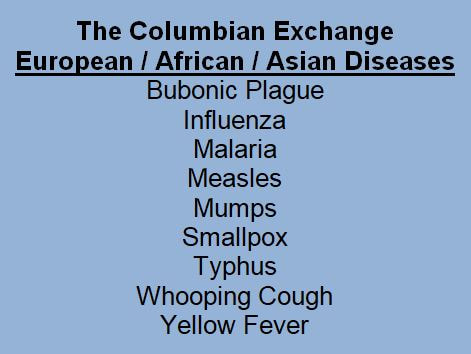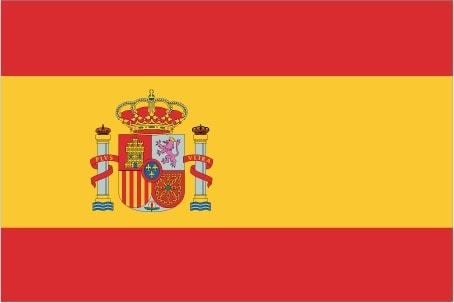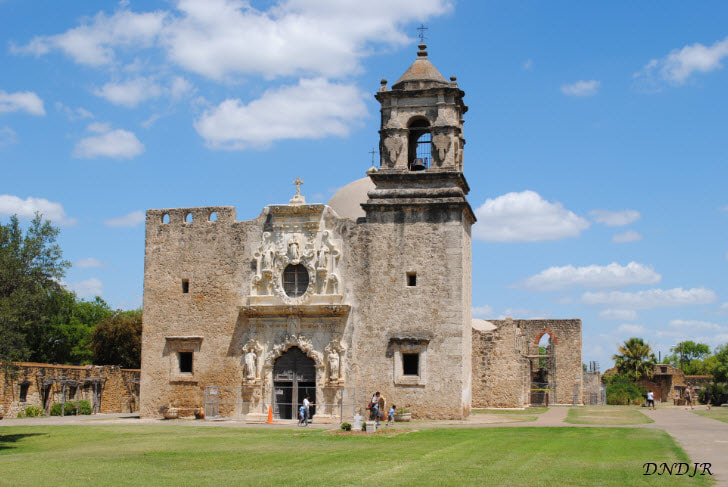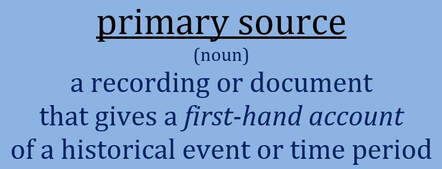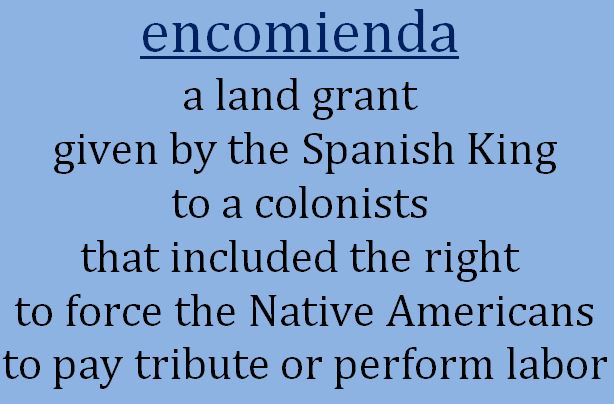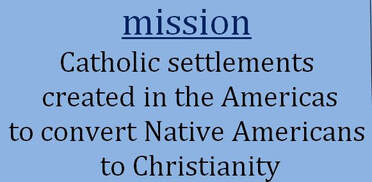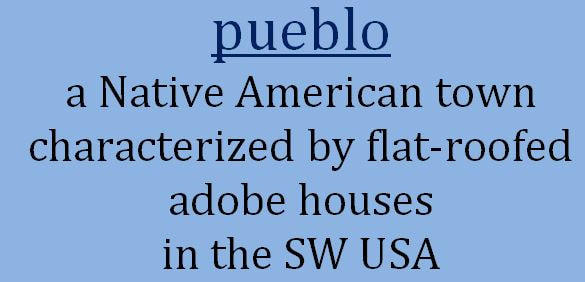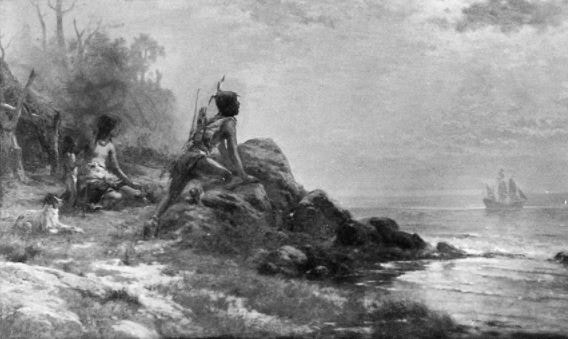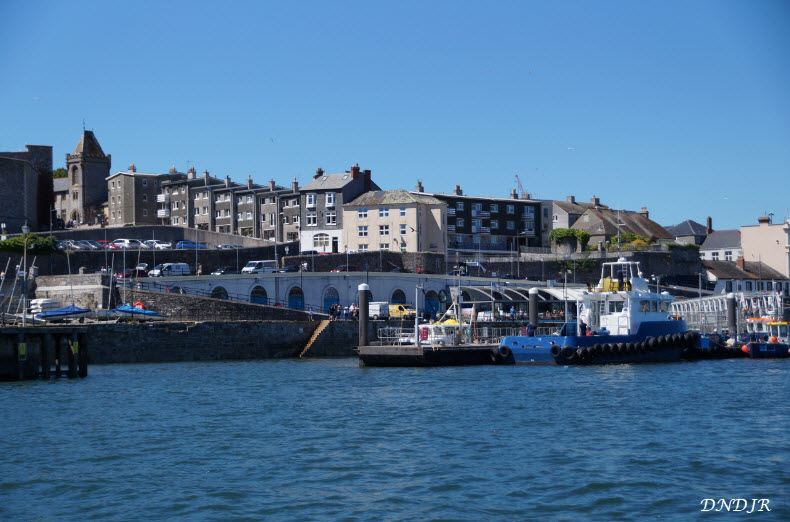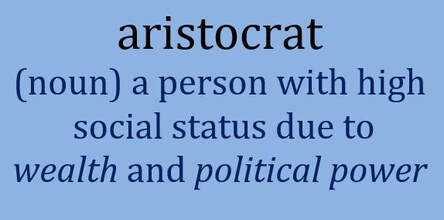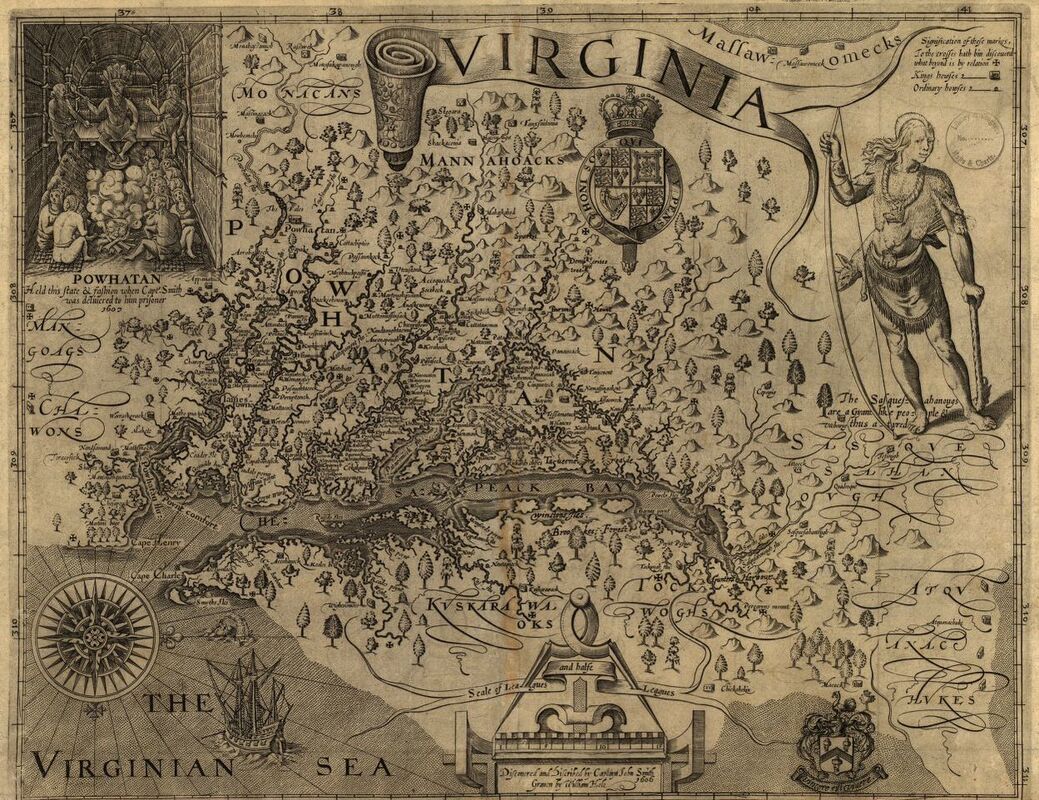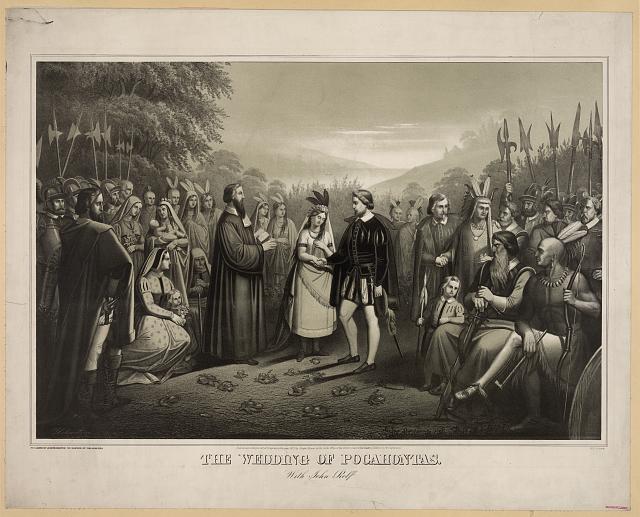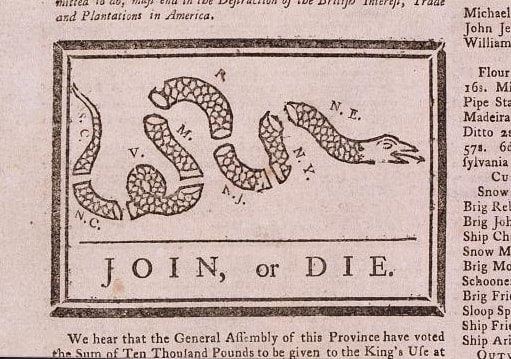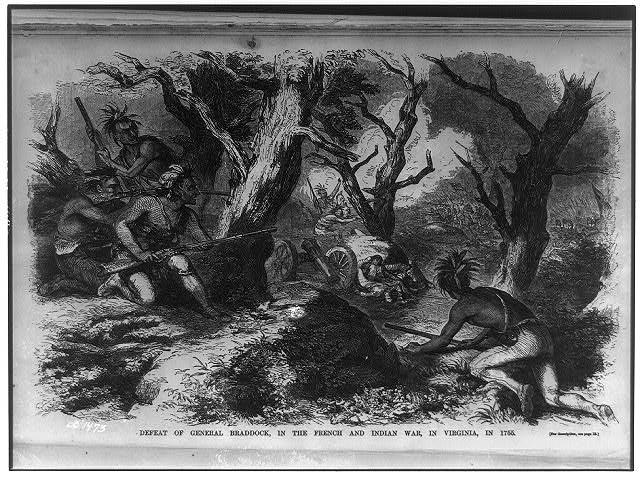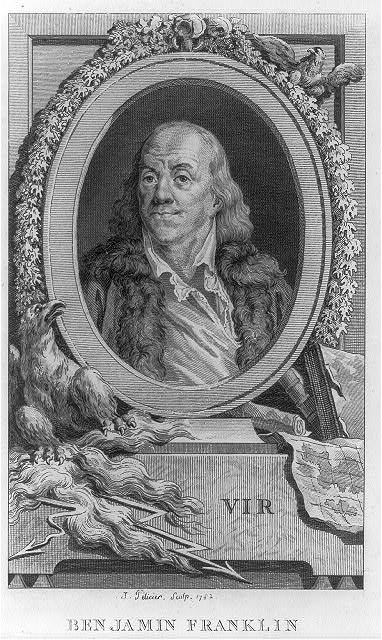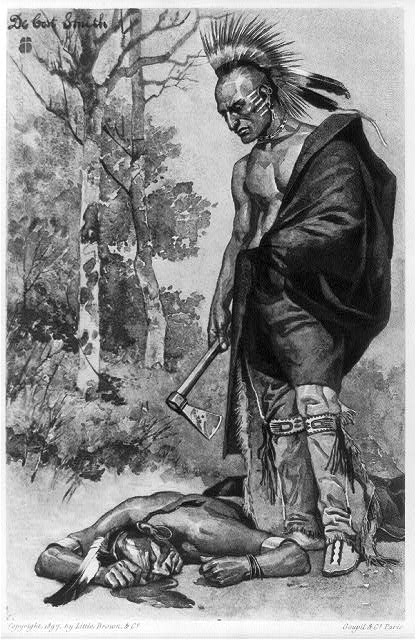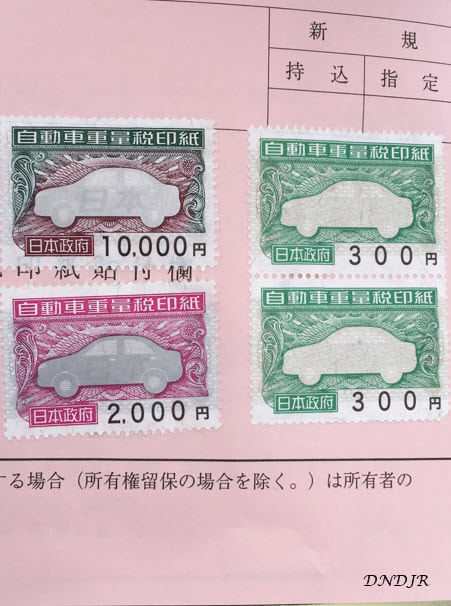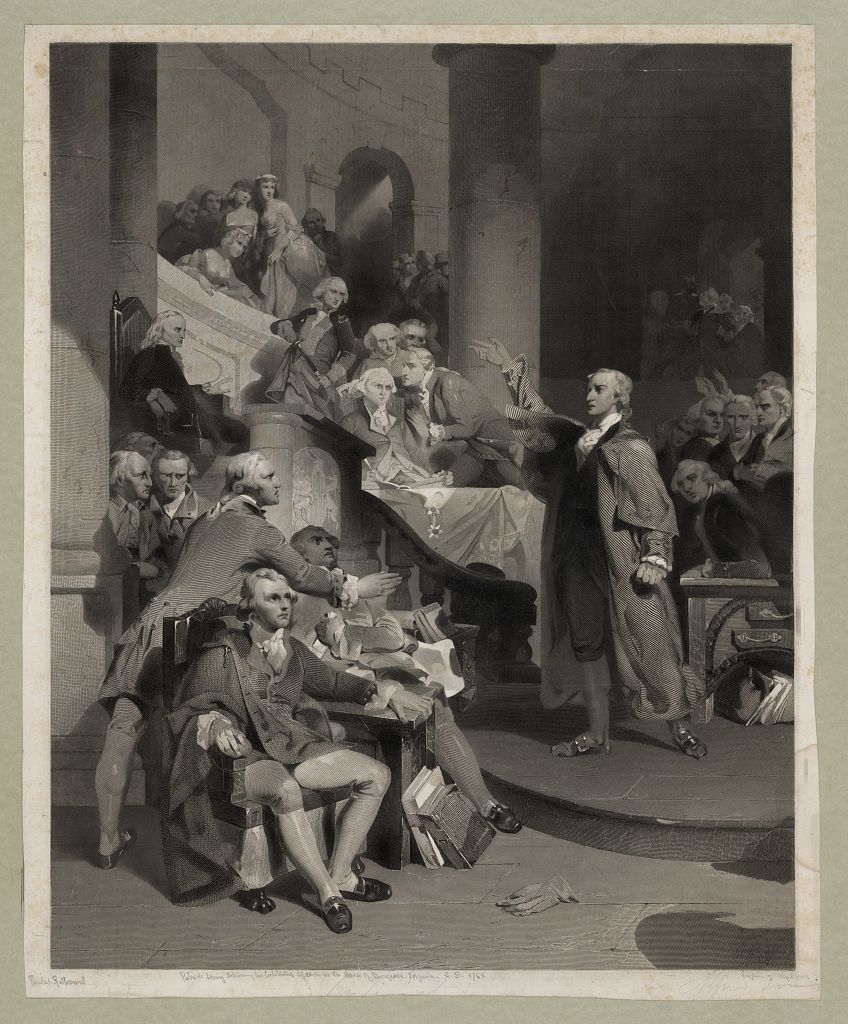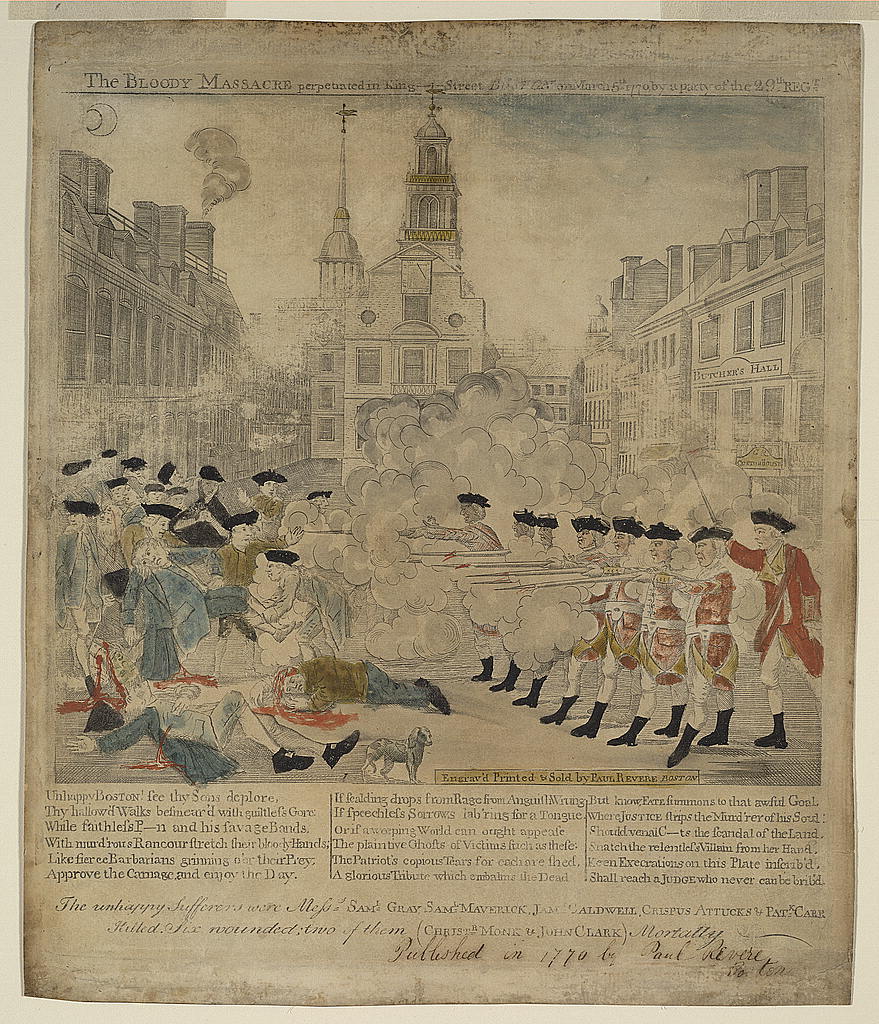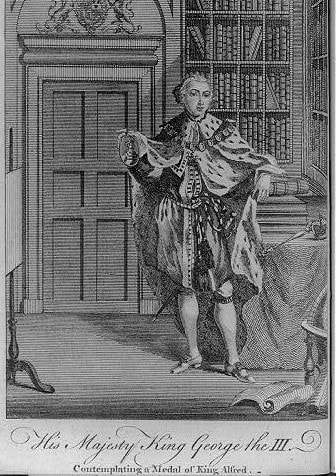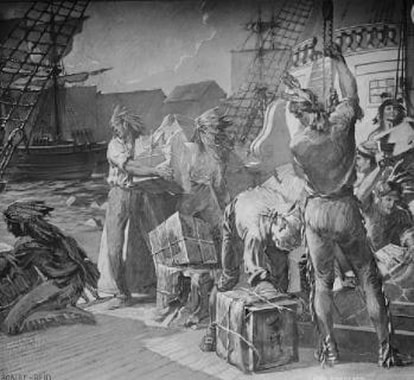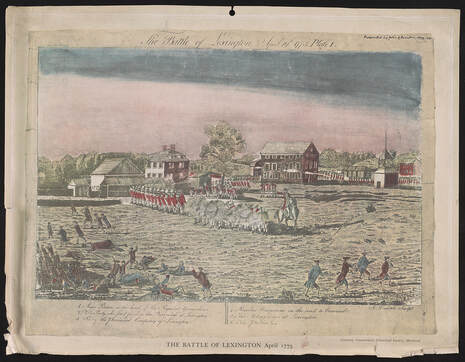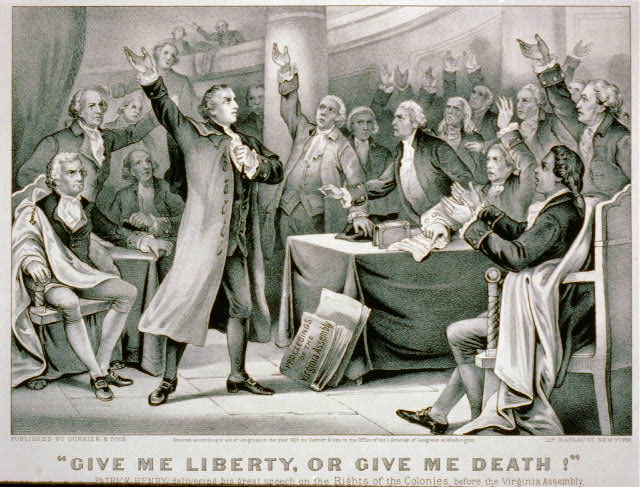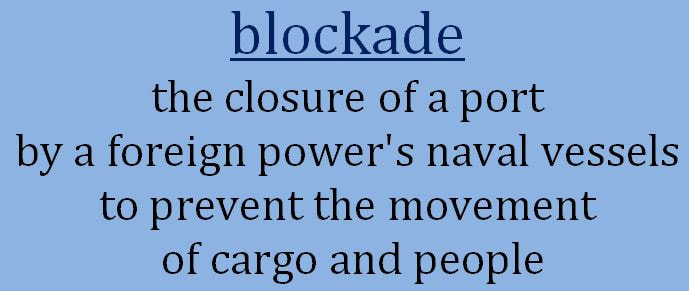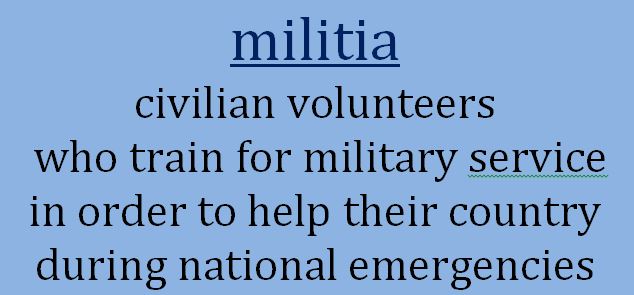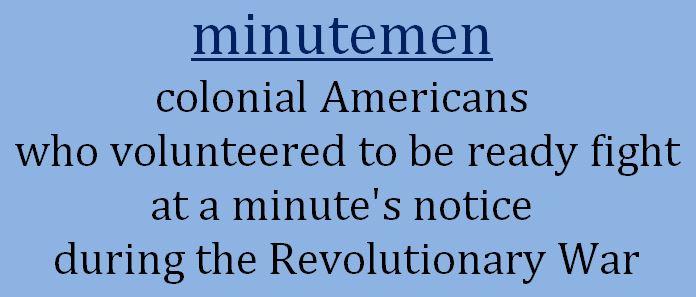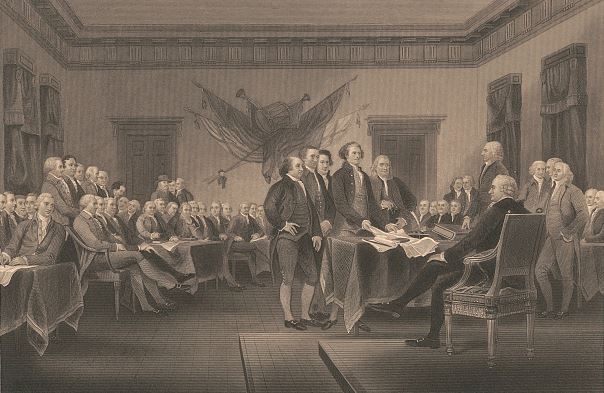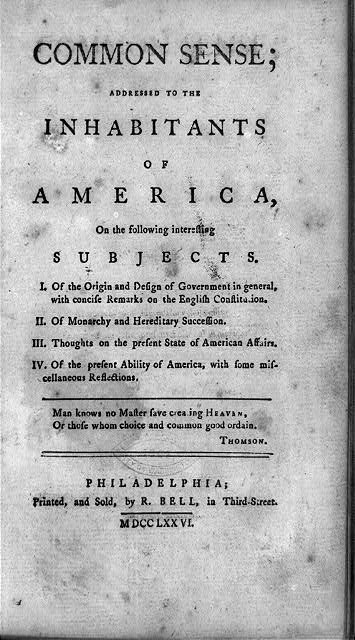|
1492 Italian sailor Columbus Arrives in the Americas (Columbus sailed the ocean blue in 1492) 1607 English settlers arrive at Jamestown (modern day Virginia) 1775-1783 American Revolution (American colonists against the British) July 4, 1776 Declaration of Independence (signed at Independence Hall in Philadelphia, Pennsylvania) 1861-1865 American Civil War (between the North states and the Southern states) |
US Lesson 5 - 1.3 European Exploration in the Americas
US Lesson 5 Parts 3 and 5 - Text Reading Assignment 1.3 European Exploration in the Americas (Pages 33-40)
Today you will be reading with cooperative reading group. Read the assigned section aloud and focus particularly on the Columbian Exchange. The graphic on page 39 is very useful in understanding the Columbian Exchange. Be sure to discuss what is being exchanged between the Western Hemisphere and Eastern Hemisphere.
Writing Assignment - After completing the read assignment and group discussion, each person in the group will complete the following assignment. Use a sheet of notebook paper to make a list with two columns. Title the left column "Western Hemisphere" and the right column "Eastern Hemisphere." First, list as many plants, animals, diseases, and inventions that originated in the Western Hemisphere. Next, list as many plants, animals, diseases, and inventions that originated in the Eastern Hemisphere. All of the items in your lists must come from the textbook. Keep discussing the possibilities with your group and adding to your list until five minutes before the bell. Submit your assignment in the "Inbox" before you leave class.
Today you will be reading with cooperative reading group. Read the assigned section aloud and focus particularly on the Columbian Exchange. The graphic on page 39 is very useful in understanding the Columbian Exchange. Be sure to discuss what is being exchanged between the Western Hemisphere and Eastern Hemisphere.
Writing Assignment - After completing the read assignment and group discussion, each person in the group will complete the following assignment. Use a sheet of notebook paper to make a list with two columns. Title the left column "Western Hemisphere" and the right column "Eastern Hemisphere." First, list as many plants, animals, diseases, and inventions that originated in the Western Hemisphere. Next, list as many plants, animals, diseases, and inventions that originated in the Eastern Hemisphere. All of the items in your lists must come from the textbook. Keep discussing the possibilities with your group and adding to your list until five minutes before the bell. Submit your assignment in the "Inbox" before you leave class.
|
Assignment
Use the paper provided in class to create a visual display of the Columbian Exchange. You may attempt to recreate the graphic that was used in the video or create your own design. Include plants, animals, diseases, and inventions that originated in both the Western and Eastern Hemispheres. Be sure to label the hemispheres, the Atlantic Ocean, and the continents. Make the visual display colorful, interesting, and readable. This assignment is due at the end of next class period. |
US Lesson 6 - 2.1 Spanish Colonization and New Spain
DoDEA Standard 7.2 Colonial Developments
European exploration of the New World resulted in various interactions with Native Americans and in colonization. The American colonies were established for a variety of reasons and developed differently based on economic, social, and geographic factors. Colonial America had a variety of social structures under which not all people were treated equally.
7.2a Social, economic, and scientific improvements helped European nations launch an Age of Exploration.
European exploration of the New World resulted in various interactions with Native Americans and in colonization. The American colonies were established for a variety of reasons and developed differently based on economic, social, and geographic factors. Colonial America had a variety of social structures under which not all people were treated equally.
7.2a Social, economic, and scientific improvements helped European nations launch an Age of Exploration.
US Lesson 6 Part 1 - Columbian Exchange Part II Assignment
Use the paper provided in class to create a visual display of the Columbian Exchange. You may attempt to recreate the graphic that was used in the video or create your own design. Include plants, animals, diseases, and inventions that originated in both the Western and Eastern Hemispheres. Be sure to label the hemispheres, the Atlantic Ocean, and the continents. Make the visual display colorful, interesting, and readable. This assignment is due at the end of class today.
Use the paper provided in class to create a visual display of the Columbian Exchange. You may attempt to recreate the graphic that was used in the video or create your own design. Include plants, animals, diseases, and inventions that originated in both the Western and Eastern Hemispheres. Be sure to label the hemispheres, the Atlantic Ocean, and the continents. Make the visual display colorful, interesting, and readable. This assignment is due at the end of class today.
US Lesson 6 Parts 2 / 3 / 4 - Primary Sources / 2.1 Spanish Colonization and New Spain
US Lesson 6 Writing Assignment - Spain in the Americans Assignment
Complete the writing assignment using your textbook as your information source. Answer each question using complete sentences and provide evidence from the text to support your answers. All answers require you to restate the question, provide evidence in the form of a quote (and page number), and comment on the evidence. This assignment has been assigned to you in Google Classroom. Remember that you can access the online text by using ClassLink.
Complete the writing assignment using your textbook as your information source. Answer each question using complete sentences and provide evidence from the text to support your answers. All answers require you to restate the question, provide evidence in the form of a quote (and page number), and comment on the evidence. This assignment has been assigned to you in Google Classroom. Remember that you can access the online text by using ClassLink.
US Lesson 7 - 2.2 First French, Dutch, and English Colonies
DoDEA Standard 7.2 Colonial Developments- European exploration of the New World resulted in various interactions with Native Americans and in colonization. The American colonies were established for a variety of reasons and developed differently based on economic, social, and geographic factors. Colonial America had a variety of social structures under which not all people were treated equally.
7.2c European nations established colonies in North America for economic, religious, and political reasons. Differences in climate, physical features, access to water, and sources of labor contributed to the development of different economies in the New England, Middle, and Southern Colonies.
7.2d The Dutch established settlements along the Hudson River and the French established settlements in the Champlain Valley. Dutch contributions to American society were long-lasting.
7.2c European nations established colonies in North America for economic, religious, and political reasons. Differences in climate, physical features, access to water, and sources of labor contributed to the development of different economies in the New England, Middle, and Southern Colonies.
7.2d The Dutch established settlements along the Hudson River and the French established settlements in the Champlain Valley. Dutch contributions to American society were long-lasting.
|
US Lesson 7 Part 1 Finish - Spain in the Americans Assignment
Complete the writing assignment using your textbook as your information source. Answer each question using complete sentences and provide evidence from the text to support your answers. All answers require you to restate the question, provide evidence in the form of a quote (and page number), and comment on the evidence. |
This assignment has been assigned to you in Google Classroom. This assignment is due at the end of class.
US Lesson 7 Part 2 - 2.2 The First French, Dutch , and English Colonies
US Lesson 7 Part 2 - 2.2 The First French, Dutch , and English Colonies
Enduring Understandings
- The French and Dutch also colonized North America, seeking to profit from the fur trade.
- English colonists settled along the east coast of North America.
- People seeking religious freedom founded New England's colonies, as well as Pennsylvania and Maryland.
- The slave trade brought enslaved Africans to the English colonies, especially in the South, which relied on slavery for plantation agriculture.
- The English colonies developed representative government and inherited a tradition of legal rights from England.
US Lesson 7 Part 4 Text Reading Assignment - 2.2 European Rivalries / New France Is Colonized
US Lesson 7 Part 4 Text Reading Assignment - 2.2 European Rivalries / New France Is Colonized
|
So far we have focused on the Spanish and their colonization of the Americas. Now, we will shift our focus to the eastern coast of the United States and Canada learn how other European countries settled the Americas. The French established their first permanent settlement in 1605 and it was called New France.
|
Work with your cooperative learning group to read and discuss pages 56-60. Pay particular attention to the map on page 58.
Report out when you group is ready to describe what you read. As you read, focus on the question below.
Focus Questions
Report out when you group is ready to describe what you read. As you read, focus on the question below.
Focus Questions
- Where was the first permanent French colony in North America?
- Who established the first French colony?
- Who was the French explorer who sailed down the Mississippi River and eventually reached the Gulf of Mexico?
- Louisiana was named in honor of what person?
- How did French colonization of the Americas differ from Spanish colonization?
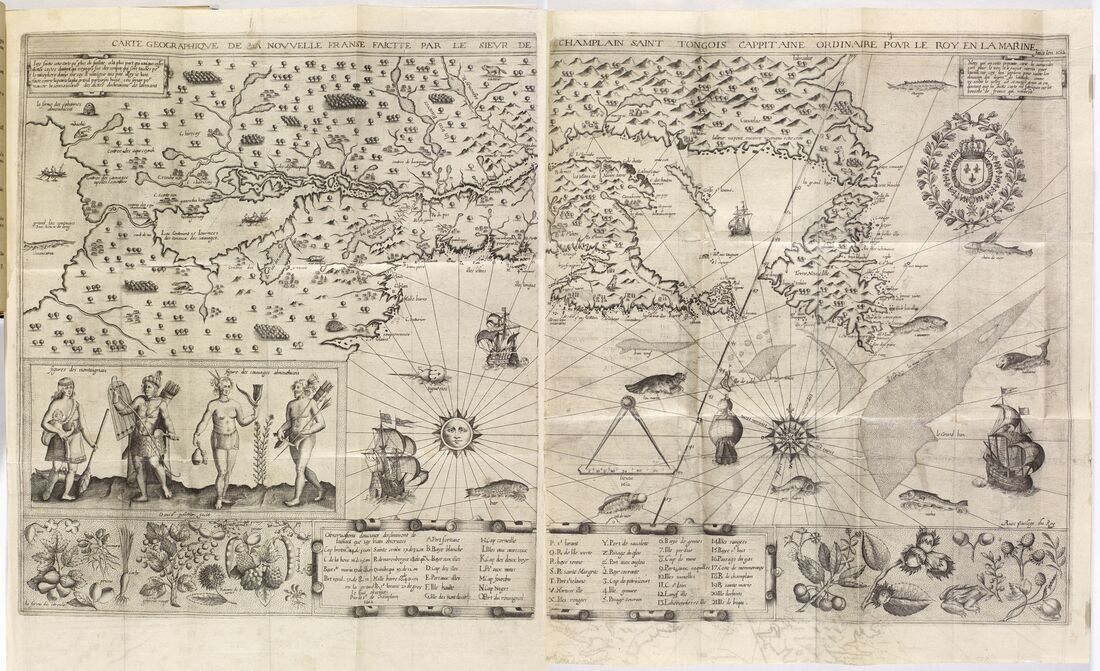
Geographical Map of New France Made by Mr. de Champlain (1603 Voyage)
Source- Library of Congress
Source- Library of Congress
Samuel de Champlain departed his home country of France in 1603. Forty days later he arrived in modern-day Canada. During his expedition he traveled up the St. Lawrence River and arrived near modern-day Montreal. He later established Quebec City in 1608.
US Lesson 8 - 2.2 First French, Dutch, and English Colonies
DoDEA Standard 7.2 Colonial Developments- European exploration of the New World resulted in various interactions with Native Americans and in colonization. The American colonies were established for a variety of reasons and developed differently based on economic, social, and geographic factors. Colonial America had a variety of social structures under which not all people were treated equally.
7.2c European nations established colonies in North America for economic, religious, and political reasons. Differences in climate, physical features, access to water, and sources of labor contributed to the development of different economies in the New England, Middle, and Southern Colonies.
7.2d The Dutch established settlements along the Hudson River and the French established settlements in the Champlain Valley. Dutch contributions to American society were long-lasting.
7.2c European nations established colonies in North America for economic, religious, and political reasons. Differences in climate, physical features, access to water, and sources of labor contributed to the development of different economies in the New England, Middle, and Southern Colonies.
7.2d The Dutch established settlements along the Hudson River and the French established settlements in the Champlain Valley. Dutch contributions to American society were long-lasting.
|
Work with your cooperative learning group to read and discuss pages 60-62. Report out when you group is ready to describe what you read. As you read, focus on the question below.
Focus Questions
|
Henry Hudson entering New York Bay, September 11, 1609, with Indian family watching on shore in foreground
Source- Library of Congress |
US Lesson 8 Part 2 - Special Activity
US Lesson 8 Part 2 - Special Activity
Format
Homework- Update Your Planner (Sent Via US History in Google Classroom)
- Save the file as “2021 10 US Lesson 8 Part 2 Last Name”
- Type the questions in bold.
- Answer the questions below it using complete sentences (without putting them in bold).
- Use evidence and page numbers to support all answers (use the proper format).
- Complete a spelling and grammar check of the assignment before submitting it for a grade.
- Submit the assignment in Google Classroom.
- All students must complete their assignments by the end of class or complete it for homework.
- All computers must be cleaned and put away prior to the end of class.
Homework- Update Your Planner (Sent Via US History in Google Classroom)
US Lesson 9 - 2.2 / 2.3 English Colonies
DoDEA Standard 7.2 Colonial Developments- European exploration of the New World resulted in various interactions with Native Americans and in colonization. The American colonies were established for a variety of reasons and developed differently based on economic, social, and geographic factors. Colonial America had a variety of social structures under which not all people were treated equally.
7.2c European nations established colonies in North America for economic, religious, and political reasons. Differences in climate, physical features, access to water, and sources of labor contributed to the development of different economies in the New England, Middle, and Southern Colonies.
7.2c European nations established colonies in North America for economic, religious, and political reasons. Differences in climate, physical features, access to water, and sources of labor contributed to the development of different economies in the New England, Middle, and Southern Colonies.
- Why did Jamestown colony have so little food in its early years?
- What crop helped Jamestown's economy to improve after 1612?
- What was the name of the first legislative assembly in the English colonies?
- Why does the text state that "At first free Virginians had even greater rights that citizens in England"?
- What Bacon's Rebellion? What caused it?
- What impact did Virginia's lifelong enslavement laws have on Africans in the colony?
|
US Lesson 9 Part 2 - 2.3 The New England Colonies
Today you will dig a little deeper into the English colonies along the eastern coast of the present United States. The colonies are generally referred to as in regards to the regions where they are located. Work with your cooperative learning group to read Chapter 2.3 (starting on page 69). Stop and discuss each subtopic (red titles) with your group as you read today. Focus particularly on the chart on page 75 with the intent of understanding the facts. As you read, focus on the questions below. What was the significance of the Mayflower Compact? Were all of the people on the Mayflower Pilgrims? The Pilgrims left Plymouth, England aboard the Mayflower on September 16, 1620. After a 66 day voyage across the Atlantic Ocean, the 102 Pilgrims arrived at Cape Cod in modern-day Massachusetts. Before disembarking, they created the Mayflower Compact. Two of the major leaders of the Pilgrims were William Bradford and William Brewster. US Lesson 9 Part 3 - 2.3 The New England Colonies |
Plymouth, England (United Kingdom)
|
US Lesson 9 Part 4 - 2.3 The New England Colonies
- Yesterday you read the Jamestown article and highlighted the Jamestown article with your cooperative learning group. Begin today by ranking the five most important facts in the article from one to five.
- Next, read the Puritan Christmas article aloud with your group. Move directly to the Jamboard activity as soon as your group is finished with the article.
- Once this is done, have your designated computer person open their email and access the class Jamboard. The Jamboard is broken down into several different pages (shown below). Each group is responsible for contributing one "sticker" per page. Topics for each page are: the main idea of the Jamestown article, who, what, when, where, and why of the Puritan Article.
- Once you have completed the Jamboard activity clean your area and prepare to leave.
US Lesson 9 Part 5 - The Middle Colonies Pages 83-91
Work with your cooperative learning group to read pages 83 - 91. Stop and discuss each subtopic (red titles) with your group as you read today. Focus particularly on the map on page 84 with the intent of learning the names and locations of the "Middle Colonies." As you read, focus on the questions below.
Why were the colonies of New York and New Jersey established?
Why were the colonies of Pennsylvania and Delaware established?
Submit a short paragraph of between three to five sentences for each of the two two questions shown above. Per established class procedures, use evidence and a parenthetical citation to support your answers. You must use one quote as part of each answer.
Work with your cooperative learning group to read pages 83 - 91. Stop and discuss each subtopic (red titles) with your group as you read today. Focus particularly on the map on page 84 with the intent of learning the names and locations of the "Middle Colonies." As you read, focus on the questions below.
Why were the colonies of New York and New Jersey established?
Why were the colonies of Pennsylvania and Delaware established?
Submit a short paragraph of between three to five sentences for each of the two two questions shown above. Per established class procedures, use evidence and a parenthetical citation to support your answers. You must use one quote as part of each answer.
US Lesson 10 - 2.4 Southern Colonies
DoDEA Standard 7.2 Colonial Developments- European exploration of the New World resulted in various interactions with Native Americans and in colonization. The American colonies were established for a variety of reasons and developed differently based on economic, social, and geographic factors. Colonial America had a variety of social structures under which not all people were treated equally.
7.2c European nations established colonies in North America for economic, religious, and political reasons. Differences in climate, physical features, access to water, and sources of labor contributed to the development of different economies in the New England, Middle, and Southern Colonies.
7.2c European nations established colonies in North America for economic, religious, and political reasons. Differences in climate, physical features, access to water, and sources of labor contributed to the development of different economies in the New England, Middle, and Southern Colonies.
US Lesson 10 Part 1 - The Southern Colonies Page 92-100
Today you will begin reading about the Southern Colonies. These colonies stretch from Maryland down to Georgia. As you read remember that the borders of the states have changed a lot since the 1600s. When your group finishes reading, discuss the following questions and then report out with your answers.
Chapter Objectives
Today you will begin reading about the Southern Colonies. These colonies stretch from Maryland down to Georgia. As you read remember that the borders of the states have changed a lot since the 1600s. When your group finishes reading, discuss the following questions and then report out with your answers.
Chapter Objectives
- Explain the reasons for the establishment of Maryland.
- Explain the reasons for the establishment of the Carolinas and Georgia.
- Describe the relationship between different environments, different settlement patterns, and different economic systems in the Southern Colonies.
- Explain the development of the slave trade and the spread of slavery in the Southern Colonies.
How did Oglethorpe's idea to found Georgia help solve a social problem in England?
When, where, and why did the slave trade begin?
What was the Middle Passage and how did it impact the lives of people in the Southern Colonies?
When, where, and why did the slave trade begin?
What was the Middle Passage and how did it impact the lives of people in the Southern Colonies?
Lesson 10 Part 2 - Understanding Colonial Society - Economics
Thus far you have learned about the three colonial regions and their characteristics. Recall that 80% of population of the New England Colonies was engaged in agriculture.
This trend continued in the Middle Colonies as was highlighted in the photographs on pages 86 and 89 of the textbook. Crops and farm animals eventually became very important to the economy of of the Middle Colonies. The text states that "Every year, they sent tons of beef, pork, and butter to the ports of New York and Philadelphia. From there, the goods went by ship to New England and the South or to the West Indies , England, and other parts of Europe" (89). The export of agricultural products, especially to England, was very important.
The economy developed somewhat differently in Southern Colonies. Plantations were established in the Southern Colonies that grew tobacco, rice, indigo, and other crops. Unfortunately, plantations required many workers. To meet this labor need, Africans were enslaved and brought to the Americas.
Key Concept- Colonies were frequently established by countries to obtain natural resources. Many of the natural resources were sent back to the colonial power or its other colonies to be made into products. Products were then exported back to the colonies or other countries to earn a profit.
Review - Recall that the French established their settlements across North America to take advantage of the fur trade. France, Spain, and England colonized the West Indies and established huge sugar plantations.
Thus far you have learned about the three colonial regions and their characteristics. Recall that 80% of population of the New England Colonies was engaged in agriculture.
This trend continued in the Middle Colonies as was highlighted in the photographs on pages 86 and 89 of the textbook. Crops and farm animals eventually became very important to the economy of of the Middle Colonies. The text states that "Every year, they sent tons of beef, pork, and butter to the ports of New York and Philadelphia. From there, the goods went by ship to New England and the South or to the West Indies , England, and other parts of Europe" (89). The export of agricultural products, especially to England, was very important.
The economy developed somewhat differently in Southern Colonies. Plantations were established in the Southern Colonies that grew tobacco, rice, indigo, and other crops. Unfortunately, plantations required many workers. To meet this labor need, Africans were enslaved and brought to the Americas.
Key Concept- Colonies were frequently established by countries to obtain natural resources. Many of the natural resources were sent back to the colonial power or its other colonies to be made into products. Products were then exported back to the colonies or other countries to earn a profit.
Review - Recall that the French established their settlements across North America to take advantage of the fur trade. France, Spain, and England colonized the West Indies and established huge sugar plantations.
The Enlightenment
- was an era, roughly from 1650-1800, that is sometimes referred to as the “Age of Reason”
- it was a time when people began to challenge basic ideas related to liberty, the purpose of government, and especially science
- philosophers developed many ideas related to the three areas (liberty, the purpose of government, science)
In order to understand the "big picture" of colonies and economics, it is important to include the two concepts shown below. Read pages 112 - 114 with your cooperative learning group. Discuss each concept individually with the goal understanding how each related to the American colonies.
- Navigation Acts
- Triangular Trade
Lesson 10 Part 3 - The Southern Colonies Writing Assignment
Complete the writing assignment that has been assigned to you in Google Classroom. Answer each question using between three to five sentences. Per established class procedures, use evidence in the form of one quote and a parenthetical citation to support your answers. This assignment is due at the end of class today.
Lesson 10 Part 4 - US Colonization Test
US Lesson 11 - 2.6 Colonial Society
DoDEA Standard 7.2 Colonial Developments- European exploration of the New World resulted in various interactions with Native Americans and in colonization. The American colonies were established for a variety of reasons and developed differently based on economic, social, and geographic factors. Colonial America had a variety of social structures under which not all people were treated equally.
7.2c European nations established colonies in North America for economic, religious, and political reasons. Differences in climate, physical features, access to water, and sources of labor contributed to the development of different economies in the New England, Middle, and Southern Colonies.
7.2c European nations established colonies in North America for economic, religious, and political reasons. Differences in climate, physical features, access to water, and sources of labor contributed to the development of different economies in the New England, Middle, and Southern Colonies.
Chapter Objectives
- Outline the structure of colonial society.
- Describe colonial art, the music, and literature, and the impact of ideas on colonial society.
- Describe the causes of the Great Awakening and its effects on colonial society.
- Explain the growth of educational institutions.
US Lesson 11 Part 1 - 2.6 Colonial Society Reading Assignment
Today you will begin reading the chapter titled "2.6 Colonial Society." Work with your group to read pages 101-111. Keep the following gold question in mind as you read.
What evidence supports the idea that educational opportunities were not equal among the various colonies?
US Lesson 11 Part 2 - The Enlightenment and John Locke
Assignment - Read the handout aloud with your cooperative learning group. Then, discuss the information with your group and highlight the five most important facts on the frond and the five most important facts on the back. Report out when your group has finished. You will be given instructions for the white-board portion of this assignment.
US Lesson 11 Part 3 - The Enlightenment Part II
Today you will begin reading the chapter titled "2.6 Colonial Society." Work with your group to read pages 101-111. Keep the following gold question in mind as you read.
What evidence supports the idea that educational opportunities were not equal among the various colonies?
US Lesson 11 Part 2 - The Enlightenment and John Locke
Assignment - Read the handout aloud with your cooperative learning group. Then, discuss the information with your group and highlight the five most important facts on the frond and the five most important facts on the back. Report out when your group has finished. You will be given instructions for the white-board portion of this assignment.
US Lesson 11 Part 3 - The Enlightenment Part II
US Lesson 12 - 3.1 The French and Indian War
DoDEA Standard 7.3 American Independence
Growing tensions over political power and economic issues sparked a movement for independence from Great Britain.
7.3b Stemming from the French and Indian War, the British government enacted and attempted to enforce new political and economic policies in the colonies. These policies triggered varied colonial responses, including protests and dissent.
US Lesson 12 Part 2 - 3.1 The French and Indian War Objectives
Key Terms and People
3.1 French and Indian War Reading Assignment - Work with your group read pages 122-129.
Growing tensions over political power and economic issues sparked a movement for independence from Great Britain.
7.3b Stemming from the French and Indian War, the British government enacted and attempted to enforce new political and economic policies in the colonies. These policies triggered varied colonial responses, including protests and dissent.
- Students will investigate the Albany Congress and the Albany Plan of Union as a plan for colonial unification.
US Lesson 12 Part 2 - 3.1 The French and Indian War Objectives
- Explain how the rivalry between Britain and France and conflict over the Ohio Valley led to the French and Indian War in North America.
- Identify how mistakes and lack of unity led to British defeats early in the war.
- Summarize how the tide of the war turned in Britain's favor.
- Explain how the British won the war.
- Describe the power shift that occurred after the war.
Key Terms and People
- French and Indian War (Seven Years' War)
- Albany Congress and Albany Plan of Union
- Treaty of Paris (1763)
- George Washington
- Benjamin Franklin
3.1 French and Indian War Reading Assignment - Work with your group read pages 122-129.
The picture above was created by Benjamin Franklin. It appeared in the May 9, 1754 edition of the The Pennsylvania Gazette. "Join, or Die" sent the message to the colonists that they had to join together to face the threat the French and Native Americans.
US Lesson 12 Part 3 - French and Indian War Writing Assignment
Read the General Edward Braddock article and then summarize the events using between eight to ten sentences. Submit the completed assignment via email.
US Lesson 12 Part 4- The Albany Plan of Union (1754) and the Albany Congress / Treaty of Paris (1763)
US Lesson 12 Part 3 - French and Indian War Writing Assignment
Read the General Edward Braddock article and then summarize the events using between eight to ten sentences. Submit the completed assignment via email.
US Lesson 12 Part 4- The Albany Plan of Union (1754) and the Albany Congress / Treaty of Paris (1763)
US Lesson 13 - 3.2 Tensions With Britain
|
DoDEA Standard 7.3 American Independence
Growing tensions over political power and economic issues sparked a movement for independence from Great Britain. 7.3b Stemming from the French and Indian War, the British government enacted and attempted to enforce new political and economic policies in the colonies. These policies triggered varied colonial responses, including protests and dissent.
RH.6-8.5 Describe how a text presents information (e.g., sequentially, comparatively, and causally). US Lesson 13 Part 1 - 3.2 Tensions With Britain Read pages 130 to 134 with your cooperative learning group. Stop occasionally to discuss the pictures and map. When you have finished, work together to answer the questions shown below and ensure that all group members know the answers. Report out when you are ready. Students who are absent need to complete the reading portion of this assignment as homework.
US Lesson 13 Part 2 - 3.2 Tensions With Britain Part II Read pages 134 to 136 with your cooperative learning group. Stop occasionally to discuss the pictures and map. When you have finished, work together to answer the questions shown below and ensure that all group members know the answers. Report out when you are ready. Students who are absent need to complete the reading portion of this assignment as homework.
US Lesson 13 Part 3 - 3.2 Tensions With Britain Part III Read pages 136 (Townshend Acts) to 140 with your cooperative learning group. Stop occasionally to discuss the picture on page 139 and the chart on page 140. When you have finished, work together to answer the questions shown below and write only the answers on your assigned whiteboard.
Students who are absent need to complete the reading portion of this assignment as homework.
|
1897 - The Death of Pontiac By De Cost Smith Goupil & Co., Paris
Source- Library of Congress Example of A Revenue Stamp (Japan)
This print shows Patrick Henry delivering a speech before the Virginia House of Burgesses against the Stamp Act of 1765.
"If this be treason, make the most of it." Source- Library of Congress |
US Lesson 14 - 3.2 Tensions With Britain
DoDEA Standard 7.3 American Independence
Growing tensions over political power and economic issues sparked a movement for independence from Great Britain.
7.3b Stemming from the French and Indian War, the British government enacted and attempted to enforce new political and economic policies in the colonies. These policies triggered varied colonial responses, including protests and dissent.
RH.6-8.5 Describe how a text presents information (e.g., sequentially, comparatively, and causally).
Growing tensions over political power and economic issues sparked a movement for independence from Great Britain.
7.3b Stemming from the French and Indian War, the British government enacted and attempted to enforce new political and economic policies in the colonies. These policies triggered varied colonial responses, including protests and dissent.
- Students will examine actions taken by the British, including the Proclamation of 1763, the Quartering Act, the Stamp Act, the Tea Act, and the Coercive Acts, and colonial responses to those actions.
- Students will compare British and colonial patriot portrayals of the Boston Massacre, using historical evidence.
RH.6-8.5 Describe how a text presents information (e.g., sequentially, comparatively, and causally).
|
US Lesson 14 Part 1 - The Boston Massacre
Work with your cooperative learning group to read the article on history.com. Pay close attention to the details and the way that the incident unfolded. When you have finished discuss each of the questions below and determine your group responses. Write your group responses on the board. Your answers should written clearly and large enough for the other class members to see from a distance. 1. The article describes the scene as a "deadly riot." Do you agree with this description? 2. What was the mood of the colonist during the time of the Boston Massacre? 3. Was Private Hugh White an instigator or a victim? 4. Captain Thomas Preston arrived on the scene with several of his soldiers. Was the way they responded justified? 5. What was the article mostly about? 6. Who was lawyer for the British soldiers? |
March 5, 1770 - The Boston Massacre On King Street In Boston by Paul Revere
Source- Library of Congress |
|
US Lesson 14 Parts 2 /3 Special Activities
Today you will move with your group to complete assignments at several stations. Groups one through three will work in the library today, while groups four through six will work in this neighborhood. Your group will have approximately 15 minutes to complete each station assignment. Tomorrow the groups will switch locations to complete the rest of the stations. Each station will have a set of instructions and materials to complete a task. Complete the tasks and record your answers in the packets. US Lesson 14 Part 4 - Reflection and Wrap-up
|
Tensions With Britain - Key Figures
John Adams Samuel Adams King George III Patrick Henry Pontiac Paul Revere Mercy Otis Warren Private Hugh White |
A 1774 Illustration of King George III
Source- Library of Congress |
US Lesson 15 - 3.3 Taking Up Arms
|
Boston Tea Party in 1773 By Robert Reid
Source - Library of Congress The Battle of Lexington in April of 1775 - Minutemen and British Troops Under Major Pitcarn By Amos Doolittle
Source- Library of Congress |
"Give me liberty, or give me death!" Patrick Henry is shown on March 23, 1775 delivering a speech at the Virginia Assembly.
Source - Library of Congress DoDEA Standard 7.3 American Independence
Growing tensions over political power and economic issues sparked a movement for independence from Great Britain. 7.3b Stemming from the French and Indian War, the British government enacted and attempted to enforce new political and economic policies in the colonies. These policies triggered varied colonial responses, including protests and dissent. RH.6-8.1 Cite specific textual evidence to support analysis of primary and secondary sources. RH.6-8.5 Describe how a text presents information (e.g., sequentially, comparatively, and causally). US Lesson 15 Part 1 - 3.3 Taking Up Arms Reading Assignment Pages 141-146 As this chapter begins, the colonies are moving closer to revolution. But it is important to understand that at this early point most colonists were not attempting to gain independence. The colonists were simply trying to prevent taxes from being levied against them without their consent and to have more control over the colonial government. This is why the Declaration of Independence was not made until a full year after the war began. What began as a series of clashes and protests eventually resulted in the birth of a new country. US Lesson 15 Part 2 - Work Session / Christmas Decorating in the Neighborhood US Lesson 15 Part 3 - 3.3 Taking Up Arms Reading Assignment Pages 146-149
An important part of this chapter involves the Second Continental Congress appointing of George Washington to take command of the Continental Army in 1775. General Washington joined the Continental Army in Boston as they maintained a siege of Boston. Unfortunately, the American soldiers were poorly trained, poorly equipped, and had lacked discipline. They were facing a British force of several thousand troops who were highly trained, well supplied by the British ships, and well disciplined. Read pages 149 through 152 with your cooperative learning group. Stop occasionally to discuss the pictures and the chart on page 150. When you have finished, work together to answer the question shown below. While you are encouraged to work with your group, each person is required to submit their own answers. What were the ten most important events that occurred in the sections titled "Opposing Sides of War" and "The War Comes to Boston" |
US Lesson 15 Part 4 - 3.3 Taking Up Arms Reading Assignment Pages 149-152
?
Use a pen to list the ten most important events in this section. Put your answers in chronological order. Use only complete sentences and do not include any quotes. Since you will be paraphrasing, include an MLA parenthetical citation at the end of all ten sentences.
Finish the assignment as homework and then submit it in Google Classroom.
US Lesson 15 Part 5 - 3.3 Taking Up Arms Reading Writing Assignment
Open a Microsoft Word document and answer "Focus Questions" one through four on page 152. Use the MLA format to document your quotes.
Format
Students who finish early need to make sure that their portion of the Persuasive Techniques Jamboard is complete.
Once this is done, you can study your notecards (either alone or with a table partner).
Homework- Update Your Planner
Format
- Save the file as “2021 12 Last Name US Lesson 15 Part 5”
- Type the questions in bold.
- Answer the questions below it using complete sentences (without putting them in bold).
- Use evidence and page numbers to support all answers using the MLA format.
- Complete a spelling and grammar check of the assignment before submitting it for a grade.
- Submit the assignment in Google Classroom.
- All students must complete their assignments by the end of class or complete it for homework.
- All computers must be cleaned and put away prior to the end of class.
Students who finish early need to make sure that their portion of the Persuasive Techniques Jamboard is complete.
Once this is done, you can study your notecards (either alone or with a table partner).
Homework- Update Your Planner
US Lesson 16 - 3.4 Declaring Independence / 3.5 Revolutionary War
DoDEA Standard 7.3 American Independence
Growing tensions over political power and economic issues sparked a movement for independence from Great Britain.
7.3b Stemming from the French and Indian War, the British government enacted and attempted to enforce new political and economic policies in the colonies. These policies triggered varied colonial responses, including protests and dissent.
RH.6-8.1 Cite specific textual evidence to support analysis of primary and secondary sources.
RH.6-8.5 Describe how a text presents information (sequentially, comparatively, and causally).
Growing tensions over political power and economic issues sparked a movement for independence from Great Britain.
7.3b Stemming from the French and Indian War, the British government enacted and attempted to enforce new political and economic policies in the colonies. These policies triggered varied colonial responses, including protests and dissent.
RH.6-8.1 Cite specific textual evidence to support analysis of primary and secondary sources.
RH.6-8.5 Describe how a text presents information (sequentially, comparatively, and causally).
3.4 Declaring Independence
|
US Lesson 16 Part 1 - 3.4 Declaring Independence Pages 153-157
Today's chapter can be seen as a brief interruption in the Revolutionary War. It is a short, but important, chapter. As you read focus on the following major people, concepts, and ideas. When you discuss the various parts of the Declaration of Independence it is important that you know the order of the topics, the meaning of each topic, and provide examples (of natural rights or the actual grievances). July 4, 1776 - Declaration of Independence Painted By John Trumbull Source- Library of Congress Major Topics
- Part I - Natural Rights (life, liberty, and the pursuit of happiness) - Part 2 - Colonial Grievances - What were the grievances? - Part 3 - Independence |
Source - Library of Congress
|
3.5 Winning Independence
Chapter 3.5 is one of the most important chapters in the book. It details the struggle of the Continental Army and the country to defeat the British. The chapter will be broken down into several segments over several days. Your cooperative learning group will read the assigned section aloud. You should also stop occasionally to discuss the pictures, maps, and charts in the chapter.
When you have finished, work together to answer the question shown below. Report out when everyone in your group knows the answers.
US Lesson 19 Part 1 - 3.5 Winning Independence Pages 158-163
Major Topics
between New Jersey and Pennsylvania.
- It is important to understand that armies usually went into "winter quarters" during the winter
season. During this time period skirmishes and battles rarely occurred.
- General Washington's attack on Christmas night took the Hessian troops by surprise.
US Lesson 19 Part 3 - 3.5 Winning Independence Pages 163-169
Major Topics
Major Topics
When you have finished, work together to answer the question shown below. Report out when everyone in your group knows the answers.
US Lesson 19 Part 1 - 3.5 Winning Independence Pages 158-163
Major Topics
- Nathan Hale
- Continental Army (Strengths and Weaknesses)
- British Army and Navy (Strengths and Weaknesses)
- Battle of Trenton
between New Jersey and Pennsylvania.
- It is important to understand that armies usually went into "winter quarters" during the winter
season. During this time period skirmishes and battles rarely occurred.
- General Washington's attack on Christmas night took the Hessian troops by surprise.
- Battle of Saratoga (a major turning point in the war)
US Lesson 19 Part 3 - 3.5 Winning Independence Pages 163-169
Major Topics
- Valley Forge
- Friedrich von Steuben
- Mary Ludwig Hays
- James Armistead
- Loyalists Strongholds
- Bernardo de Galvez
Major Topics
- John Paul Jones
- Patriot v. Loyalists
- General Cornwallis
- guerrilla warfare
- General Benedict Arnold
- Battle of Yorktown
- Treaty of Paris
- Ratification by the U.S. Government
-
US Lesson 16 Part 5 - 3.5 Winning Independence Review
End of Chapter Review Questions
- Describe Nathan Hale and why he was important in American history.
- What is the connection between the Battle of Trenton and the country where you currently live?
- Describe the Battle of Saratoga and why it is described as a turning point in the Revolutionary War.
- Describe Valley Forge and why it was important in American history.
- Describe John Paul Jones and why he was important in American history.
- Describe Benedict Arnold and how his betrayal impacted the Revolutionary War.
Please buy a poster prior to January 4th.
US Lesson 17 - 3.4 / 3.5 Revolutionary War Review
DoDEA Standard 7.3 American Independence
Growing tensions over political power and economic issues sparked a movement for independence from Great Britain.
7.3b Stemming from the French and Indian War, the British government enacted and attempted to enforce new political and economic policies in the colonies. These policies triggered varied colonial responses, including protests and dissent.
RH.6-8.1 Cite specific textual evidence to support analysis of primary and secondary sources.
RH.6-8.5 Describe how a text presents information (sequentially, comparatively, and causally).
Growing tensions over political power and economic issues sparked a movement for independence from Great Britain.
7.3b Stemming from the French and Indian War, the British government enacted and attempted to enforce new political and economic policies in the colonies. These policies triggered varied colonial responses, including protests and dissent.
RH.6-8.1 Cite specific textual evidence to support analysis of primary and secondary sources.
RH.6-8.5 Describe how a text presents information (sequentially, comparatively, and causally).
US Lesson 17 Part 1 - 3.5 Winning Independence Chapter Review
It has been a long two weeks and you might have forgotten what you learned prior to the break. So, read the chapter aloud with you group today. While you read keep the following question in mind.
What are the significant facts, events, or battles that you might include in your poster assignment?
Brainstorm with your group and create a list of twelve important facts, events, or battles and list them on the whiteboard.
US Lesson 17 Part 2 / 3 / 4 / 5 - The Revolutionary War Poster Assignment (3.3 / 3.4 / 3.5)
Step 1- American Revolution - Graphic Organizer Directions
Make a list of the twelve major events of the Revolutionary War. The major events will show the progression of the war from start to finish. It is recommended that you begin with the Battles of Lexington and Concord (April 19, 1775) and end with the Treaty of Paris 1783). Include the date of each event in the titles. The format for each is shown below.
1. Battles of Lexington and Concord (April 19, 1775)
Write two to three sentences that describe the event and why it was important.
Skip one line before moving-on to the second topic and sentences.
Step 2- This assignment can only be worked on in class. Create a poster that has a title and twelve boxes. In those boxes write a subtitle (and date) and below it a sentence that describes the event. You will also need to draw a picture (visual) that shows the event. Do not print text or pictures and place them on the poster.
Your completed assignment should meet these requirements as well as the following: be factually correct, neat, colorful, and informative.
This poster assignment is due at the end of class on Friday at the end of class.
US Lesson 12 Part 1 - Enlightenment Philosophers Who Impacted America
Work with your group to create a study sheet for this week's quiz. Although only one person will be typing, all group members are expected to contribute to the creation of the study sheet. Follow the instructions below and include all components in the study sheet.
A completed study sheet needs to include the following components.
The final task of the computer person is to send the study sheet to Mr. Duncan and all members of the group.
Work with your group to create a study sheet for this week's quiz. Although only one person will be typing, all group members are expected to contribute to the creation of the study sheet. Follow the instructions below and include all components in the study sheet.
A completed study sheet needs to include the following components.
- A heading that includes all of the group member names
- A title
- Five Sections (the Enlightenment and four sections devoted to the philosophers)
- Include four and five bullet statements that describe the major ideas and philosophies of each philosopher
The final task of the computer person is to send the study sheet to Mr. Duncan and all members of the group.
Enlightenment Philosophers
John Locke
Jean-Jacques Rousseau
George Mason
John Locke
- was an English philosopher who was born in 1632
- believed all people were born with natural rights (life, liberty, property)
- believed that people gave up some of their rights in exchange for the government protecting the rights of all people
- believed that people had a right to revolt against the government if it did not protect people's rights
Jean-Jacques Rousseau
- was a Swiss philosopher who was born in 1712
- wrote a book titled The Social Contract
- believed that governments ruled with agreement of the people (a social contract)
- believed that people gave up certain natural freedoms in exchange for security
George Mason
- was born in Virginia in 1725
- is known as the “Forgotten Founding Father”
- believed that government must guarantee basic rights and freedoms for all citizens
- believed in the freedom of the press, religious tolerance, and trial by jury
